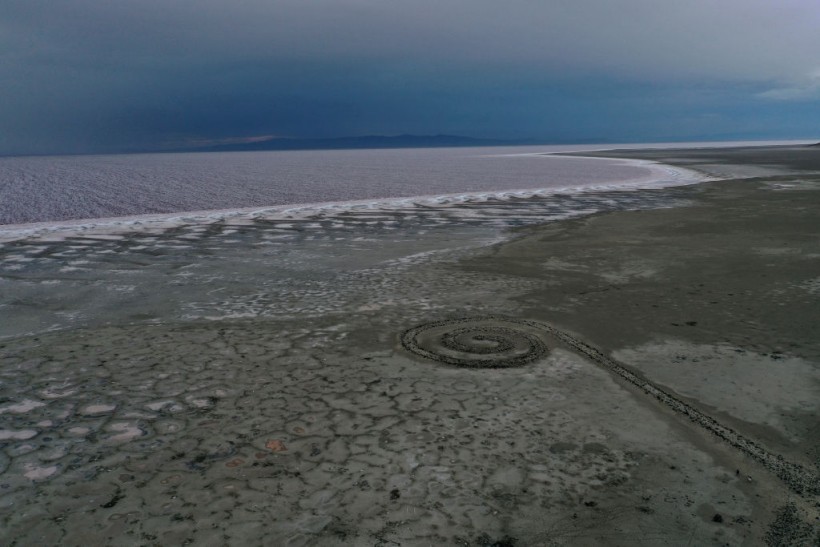Scientists in the US predict that the Great Salt Lake could vanish in as little as five years if nothing is done to preserve water in Utah immediately. To reverse the decrease, enough water must flow back into the lake each year to cover more than 2.5 million acres of land (about 10,000 square kilometers) a foot deep.
To put it in context, an acre-foot carries around 326,000 gallons (nearly 1.2 million liters) of water. However, only around 0.1 million acre-feet of water are restored to Utah's iconic lake each year, which is far from enough.

In an aerial view, the Spiral Jetty, constructed by artist Robert Smithson in 1970, sits far from the Great Salt Lake's water on August 01, 2021 near Corinne, Utah.
Great Salt Lake Facing an Unprecedented Danger
Great Salt Lake is facing unprecedented danger, according to the report led by researchers at Brigham Young University (BYU) published this week. They reported that unsustainable water use has shrunk that lake to just 37% of its former volume, plus the ongoing megadrought in the West due to worsening climate change accelerated its decline faster than scientists predicted.
Professor Benjamin Abbot, the lead author of the report, told CNN that the lake's ecosystem is collapsing and the choices the government will make in the next few months will affect the state and ecosystems throughout the West in the next decades.
The report states that the water levels of the lake have been at record lows in the past two years in a row and continues to drop since 2020, making it on track to disappear in five years.
An aerial view of an area in the Great Salt Lake reveals that was previously underwater and dried up completely on August 2, 2021, near Corinne, Utah. Today, its water levels are steadily shrinking because so much water from rivers and streams that feed it is being redirected for human consumption and is exacerbated by a megadrought that has been parching the US with little rain and snow entering the system.
The Washington Post noted that more than 70% of Utah's water use goes towards growing crops to feed livestock. Due to its unique environment, the Great Salt Lake is a vital resource for migrating birds. An estimated 10 million birds depend on the lake's brine shrimp and flies. It is also an important breeding site for pelicans.
The lake's disappearance also poses risks to human health. When salt lakes evaporate, their exposed beds become a source of toxic dust that pollutes the air, and the longer the exposed bed is dry, the more dust escapes.
READ ALSO: Severe Drought Reveals 113-Million-Year-Old Dinosaur Footprints at A Dried Up River in Texas
Water Consumption in Utah Must Be Reduced
To bring the ecosystem back from the edge, experts at BYU discovered that water use in the region must be cut by at least one-third, if not half. Abbott noted that progress in legislative action and public awareness seem to elude people in Utah who may not realize the urgency of this crisis.
According to Science Alert, they should take the examples from other areas around the world, which show the loss of saline lakes would also start long-term environmental, health, and economic suffering.
Without a coordinated rescue, the state could expect widespread air and water pollution that species listed in the Endangered Species Act would continue to decline in population, as well as the quality of life in general.
The report also calls on the governor of Salt Lake City to immediately instate an emergency rescue on the lake, which harbors important flora and fauna that protects air quality, removes water pollution, and moderates local weather.
RELATED ARTICLE: Current Mega-Drought in the US Exceeded the One That Occurred in the 1500s
Check out more news and information on Drought in Science Times.














